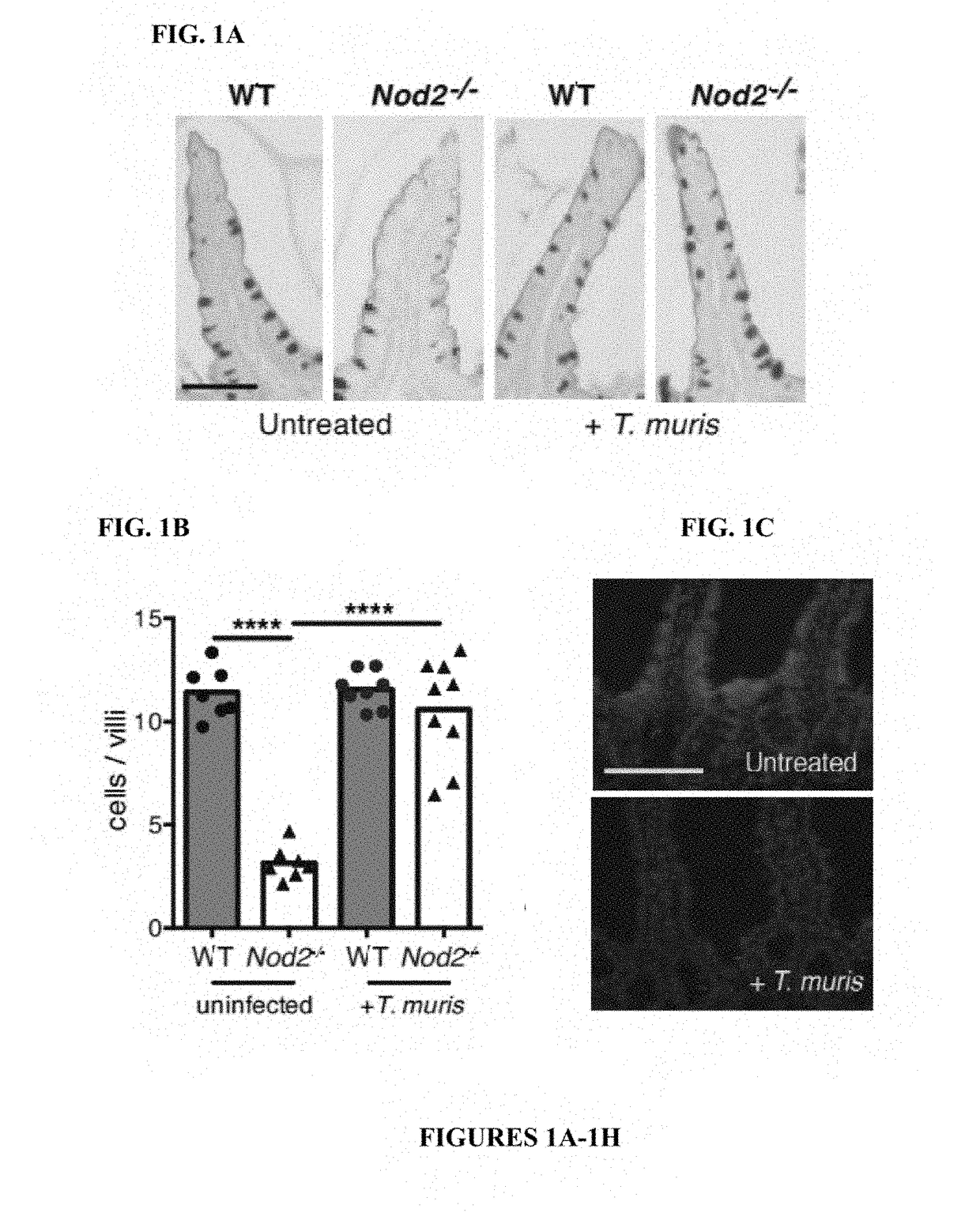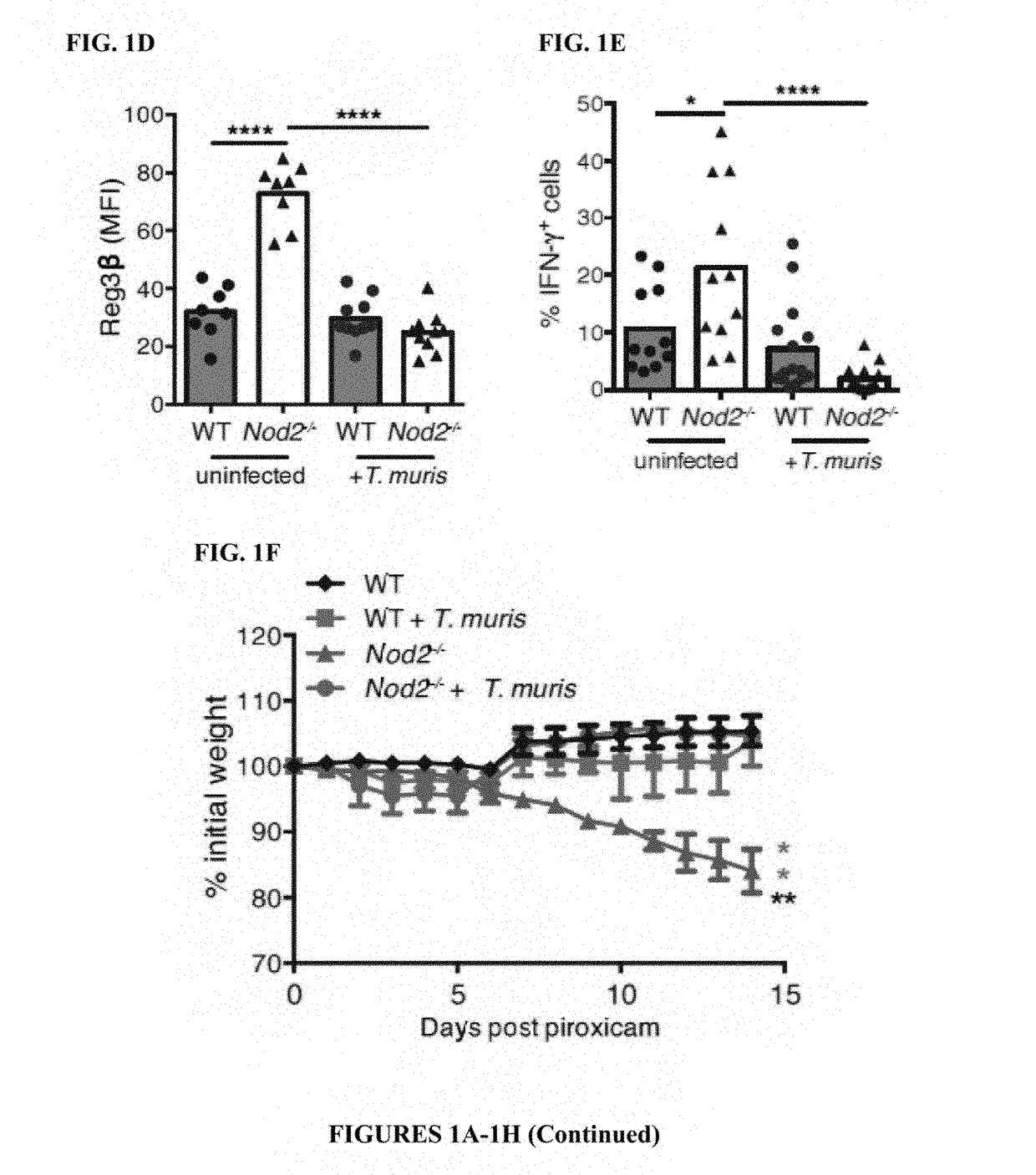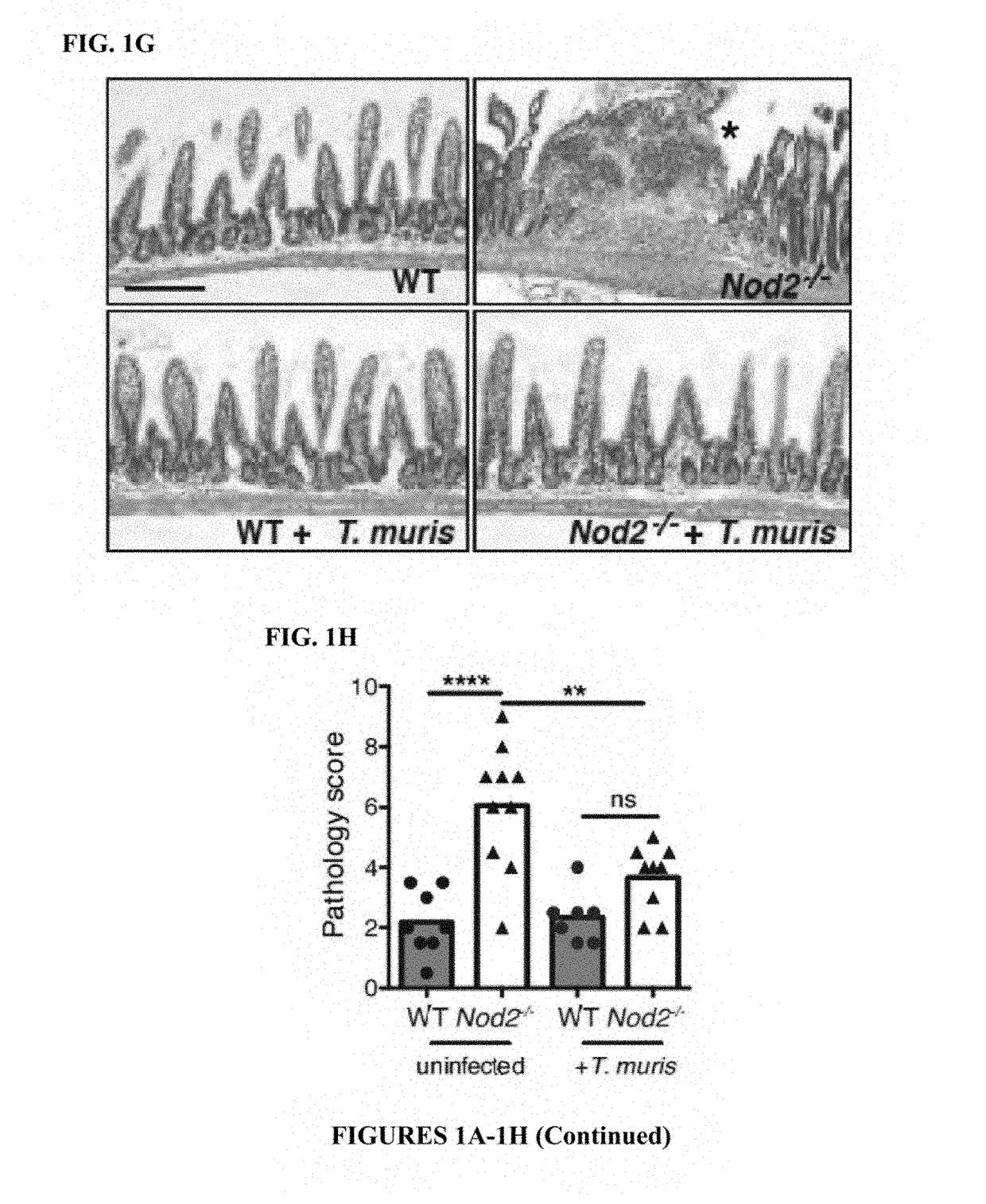Methods and compositions for treating dysbiosis and gastrointestinal and inflammatory disorders
a technology of dysbiosis and gastrointestinal and inflammatory disorders, applied in the direction of bacteria material medical ingredients, peptides, peptides, etc., can solve the problems of significant effects on the microbiota, and achieve the effect of increasing the amount or activity of bacterial species and promoting wound healing in the gi tra
- Summary
- Abstract
- Description
- Claims
- Application Information
AI Technical Summary
Benefits of technology
Problems solved by technology
Method used
Image
Examples
example 1
[0114]The inventors previously found that mice deficient in Nod2 develop several small intestinal (SI) abnormalities in a manner dependent on a ubiquitous member of the gut microbiota, Bacteroides vulgatus (6). Consistent with the specific association between NOD2 variants and ileal Crohn's disease (CD) (7), an IBD that affects the SI, the most striking abnormality was a SI goblet cell defect that resulted in a compromised mucus layer, allowing sustained colonization by B. vulgatus. The inventors also found that chronic infection of Nod2− / − mice with the parasitic worm Trichuris muris restored SI goblet cell numbers and morphology (FIGS. 1A-1B, 5A-5B). These changes were not detected in the colon, and wild-type (WT) mice infected with T. muris did not display non-specific goblet cell hyperplasia (FIG. 5C). Elevated epithelial levels of the antimicrobial lectin Reg3β and interferon (IFN)γ+ CD830 intraepithelial lymphocytes (IELs), inflammatory markers associated with goblet cell def...
example 2
[0152]The effect of mucin consumption on Clostridia expansion in Nod2− / − mice was examined. In this study, germ-free Nod2− / − mice on the C57BL / 6 background were previously described and bred onsite in an MNV / Helicobacter-free specific pathogen free (SPF) facility at NYU School of Medicine (6, 23). The mice were provided free access (24 hours a day) to either control / regular drinking water or drinking water contining mucin (75 μg / ml in water) obtained from porcine stomach and consisting of primarily MUC2 (Sigma M1778). Seven days later the germ-free mice were gavaged with a Kenya Honda mixuture, which consists of a rationally selected mixture of Clostridia strains from the human microbiota. In particular, 17-mix from K. Atarashi et al., Treg induction by a rationally selected mixture of Clostridia strains from the human microbiota. Nature 500, 232-236 (2013) was used. Atarashi et al., is incorporated herein by reference in its entirety.
[0153]On day 24, stool samples were collected fr...
example 3
[0154]B. vulgatus is cultured anaerobically in peptone yeast glucose broth (Anaerobe Systems. Cat #AS-822) for 48 hours and Nod2− / − mice are orally gavaged with 1×107 CFU's of bacteria in 100 μl broth. Seven days following inoculation, when stable colonization is established in the gut, mice are injected i.p. with either 5 μg of recombinant IL-13-Fc fusion protein (SEQ ID NO:2) in 100 μl PBS, or just 100 μl PBS for controls. Injections are repeated every three days for 21 days. Stool is collected from all mice on each day of injection and dilutions (with 1× phosphate-buffered saline (PBS) (10−1-106)) are plated on selective Bacteroides Bile Esculin agar (BD. Cat #221836) and incubated at 37° C. in a Coy anaerobic chamber, for 48 hours to quantify B. vulgatus colonization.
List of Sequences:SEQID NOSourceTypeSequence1SyntheticProteinHIHGCDKNHLREIIGILNEVTGEGTPCTEMDVPNVLTATKNTTESELVCRASKVLRIFYLKHGKTPCLKKNSSVLMELQRLFRAFRCLDSSISCTMNESKSTSLKDFLESLKSIMQMDYSGGGGSVPRDCGCKPCICTVPEVSSVFIFPPKPKD...
PUM
| Property | Measurement | Unit |
|---|---|---|
| Fraction | aaaaa | aaaaa |
| Fraction | aaaaa | aaaaa |
| Fraction | aaaaa | aaaaa |
Abstract
Description
Claims
Application Information
 Login to View More
Login to View More - R&D
- Intellectual Property
- Life Sciences
- Materials
- Tech Scout
- Unparalleled Data Quality
- Higher Quality Content
- 60% Fewer Hallucinations
Browse by: Latest US Patents, China's latest patents, Technical Efficacy Thesaurus, Application Domain, Technology Topic, Popular Technical Reports.
© 2025 PatSnap. All rights reserved.Legal|Privacy policy|Modern Slavery Act Transparency Statement|Sitemap|About US| Contact US: help@patsnap.com



